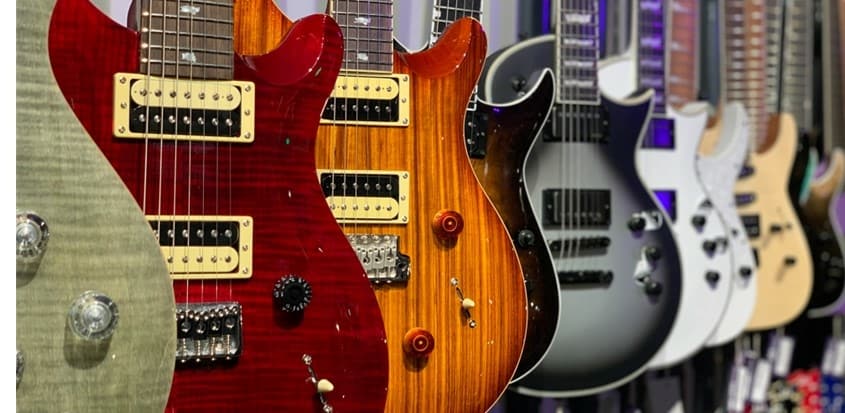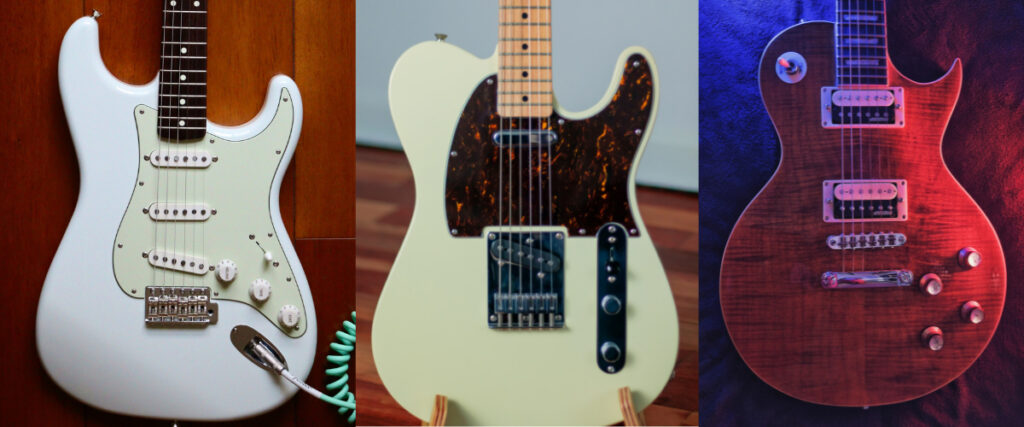One feature that electric guitars can be categorised by is the number of cutaways it has. But what difference does it make? Does it affect the tone and feel of the guitar or just the cosmetics? In this article I’ll compare everything you need to know about single and double cut guitars.
The Quick Answer
Double cut guitars provide the player with better upper fret access so are often preferred for lead playing compared to single cut guitars. When all other variables are kept the same, a single cut guitar will sound warmer and fuller and be around 4-5 lbs heavier compared to a double cut guitar.

Does the Cutaway Affect the Tone?
The number of cutaways on an electric guitar does have an effect on the overall tone, but only very slightly and it’s incredibly difficult to recognise it.
There are many variables which make up the tone, the most notable being the pickups, tone woods and scale length. This is why a Gibson Les Paul sounds totally different compared to a Fender Stratocaster. The fact that one guitar has a single cut body and the other has a double cut body makes no difference here.
You would only be able to recognise the difference if you have two guitars which are identical in all other ways except that one has a single cutaway and the other has two cutaways.
In the case that all other variables are kept the same, a single cut guitar will have a warmer and fuller tone with more bass and mid-range emphasis compared to a double cut guitar which will sound brighter and thinner.
Here is a YouTube video where you can listen to a comparison between the PRS McCarty 594 single cut and double cut guitars.
Upper Fret Access
One of the main benefits of having a double cut guitar in comparison to a single cutaway guitar is that the additional cutaway gives the player easier access to the upper frets.
This is very useful if you are a lead player and like to make full use of the fretboard. If you primarily play rhythm and barre chords then the additional cutaway may not be all that beneficial.
In my opinion, the extra cutaway is very useful and does definitely help me when I’m playing. However, I own both single and double cutaway guitars and I can still access the upper frets on both due to the cutaway on the lower half, it’s just easier with the double cutaway guitars.
It’s a good idea to try double and single cutaway guitars in a store so you can see how much benefit the extra cutaway provides in terms of playability.
Location of the Controls
On most double cutaway electric guitars, the pickup selector, tone controls and volume controls are all located on the lower half of the guitar usually either in-line or slightly behind the bridge.
On single cutaway guitars you’ll often find that the tone and volume controls are located in a similar position on the lower half of the guitar, however the pickup selector is often located on the upper half of the guitar close to the neck.
This isn’t always the case though. For example, the Telecaster is a single cutaway guitar but the pickup selector is still located on the lower half of the body.

It’s very much a personal preference as to which placement of the pickup selector is best. Personally, I find the placement of the pickup selector on a single cutaway guitar like Les Paul a bit annoying and in the way. However some players much prefer this location.
Difference in Weight
A single cut guitar will be heavier than a double cut guitar of course, if all other variables are kept the same. However in reality there are other variables to consider such as the body thickness and overall size, scale length and even the hardware and number of pickups.
If you compare the PRS McCarty 594 single cut and double cut models (which are about as close for comparison as we can get), then you’ll notice that the single-cut version weighs around 8.36 lbs (3.8 kg) on average whereas the double-cut version weighs approximately 7.95 lbs (3.6 kg).
In the market for a new guitar? I’ve written a complete buyer’s guide for electric guitars which takes you through all the things you need to consider and a step-by-step method to narrowing down your selection and choosing the best option. Here is a link to the article.
